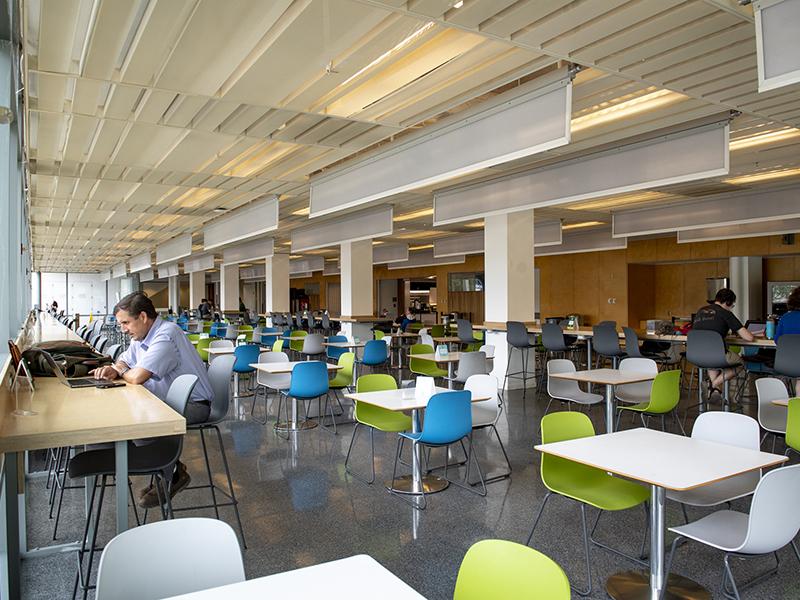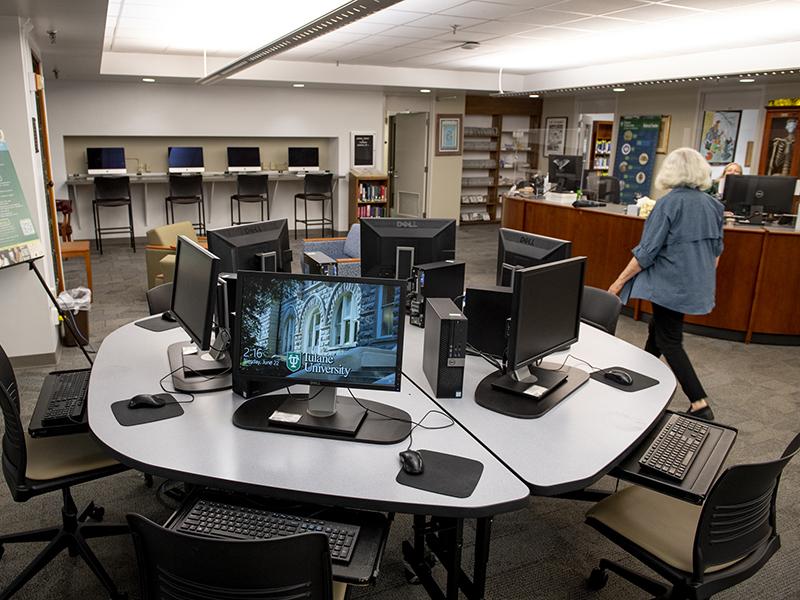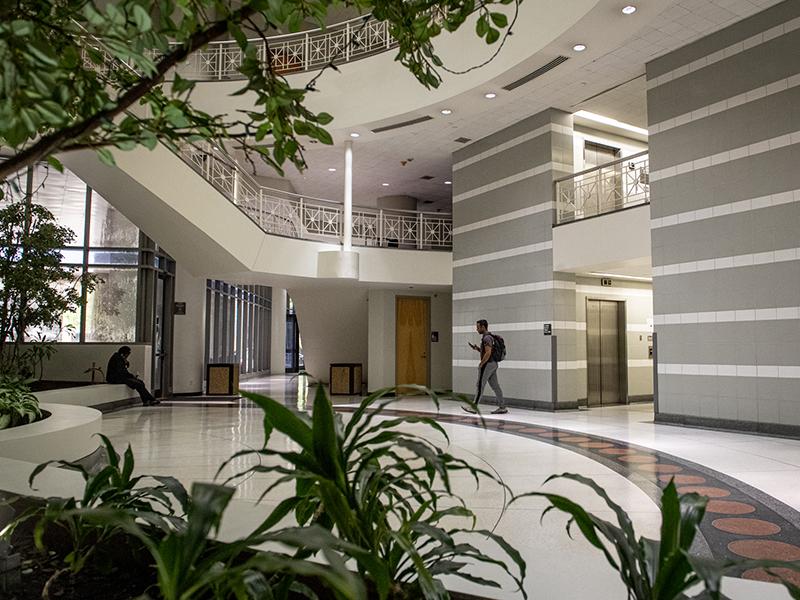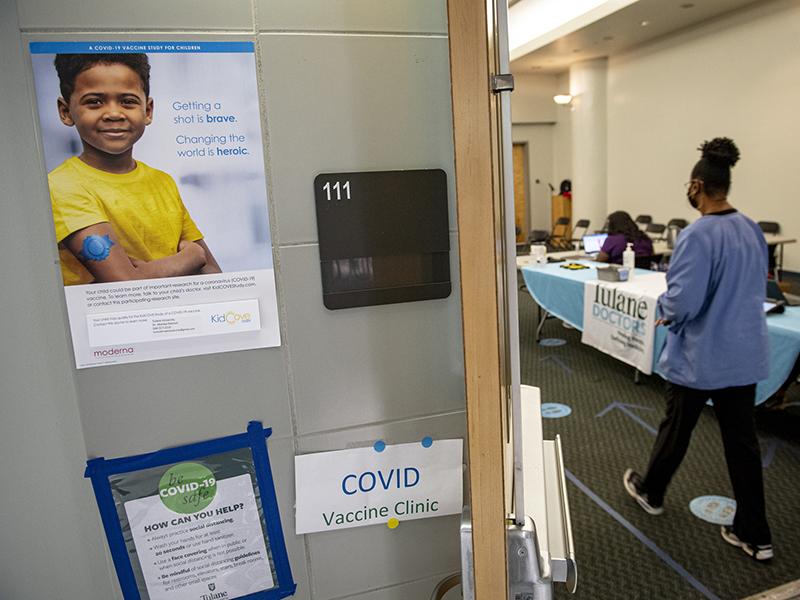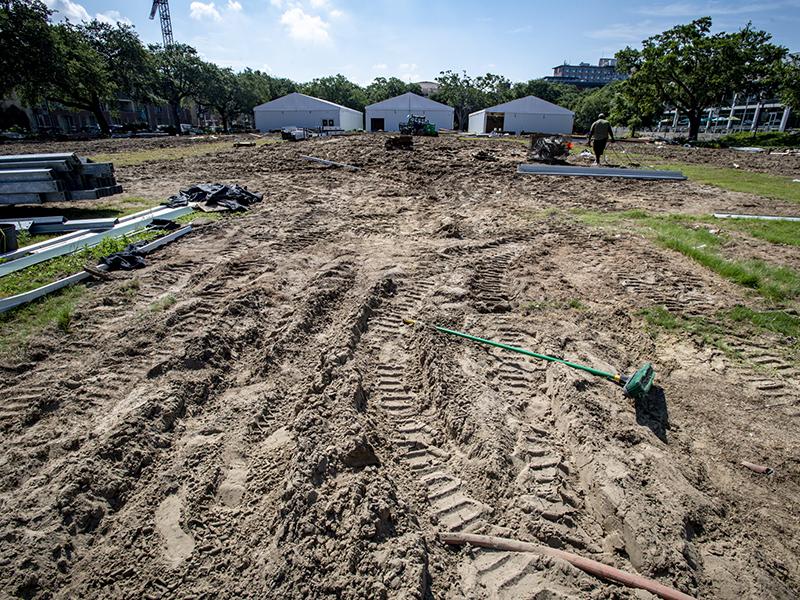Removing temporary buildings, other changes signal return to pre-COVID-19 state
Across Tulane, the quads are once again marked by student activity rather than temporary classrooms. On June 1, campus infrastructure began to take on a new look as the university emerged from the COVID-19 precautions that were enacted in 2020.
As part of this transition, many of the 13 temporary classroom buildings are being deconstructed. To date, the two temporary structures on Monroe Quad have been completely removed and those on the Berger Family Lawn, including the Dining Pavilion, are being taken down. However, some structures may still be called into use for classrooms or studio space while Richardson Memorial Hall, home of the School of Architecture, undergoes major renovation. The temporary buildings were erected last summer as additional spaces to accommodate social distancing within classroom environments.
Signage on both the uptown and downtown campuses has also been updated – switching from social distancing and mandatory mask wearing reminders for all – to prompts about getting vaccinated and mask requirements that still apply for individuals who have not yet been vaccinated. To date, 90 percent of Tulane faculty and staff have been vaccinated. Signs also encourage thorough hand washing or use of hand sanitizer for everyone.
“As we look back on one of the most challenging years in memory … we are looking forward to returning to a pre-pandemic environment with far fewer COVID-19 protocols in place,” President Michael Fitts shared in an email last week. “Your dedication, determination and expertise have enabled our community to continue teaching, living, working and learning together despite the enormous hardship of the COVID-19 pandemic. We are eagerly looking forward to having the entire Tulane community reunited.”
Dining facilities will return to their pre-COVID capacities and procedures, according to Randy Phillipson, vice president for Facilities, Campus Development, and Real Estate. While on-campus dining options are currently limited, more dining facilities on both the uptown and downtown campuses are scheduled to open later in the summer.
Seating and furniture in buildings around campus will be restored to their original locations as well.
Another precaution intended to prevent the spread of COVID-19 was the installation of plexiglass barriers. Department administrators may coordinate the removal of plexiglass with Campus Services; however, departments are being strongly encouraged to leave the barriers in place through the cold and flu season. Leftover plexiglass may be donated to the Scot Ackerman MakerSpace or the Newcomb Art Department.
“Tulane’s beautiful campus is very much a part of the Tulane experience, and everyone is excited to see it return to something close to its pre-COVID-19 state,” said Robin Forman, senior vice president for Academic Affairs and Provost. “And that is only the most visible aspect of the end of many of the COVID-19 protocols that changed the way we teach and learn and socialize with each other. This ‘return to normal’ is an exciting opportunity to explore together how we can take advantage of all that we have learned and experienced this past year to grow stronger as a community and as a university.”
When students arrive on campus this August to check in to the residence halls, they will move in with the same efficient operations that Tulane is known for. They will also return to the same familiar campuses many of them knew in pre-COVID days.
